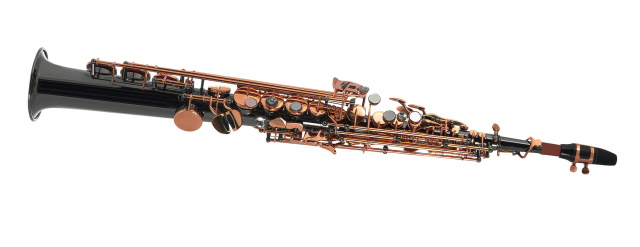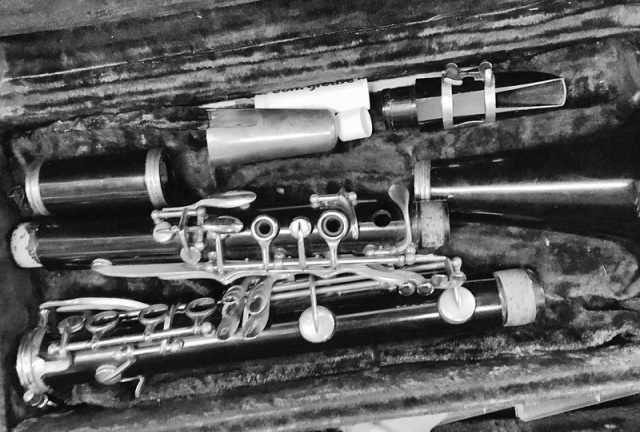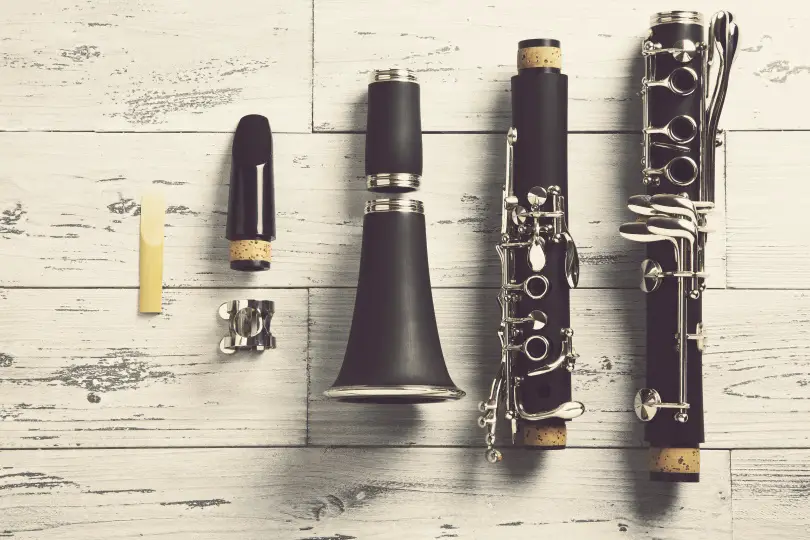Clarinets seem like relatively simple and solid instruments, and many people would believe that with proper maintenance, a clarinet can last forever. This is not true, although quality instruments may last for decades.
Like many instruments, clarinets wear out over time. Pads and cork joints need replacement, keys and springs must be rebent. Heavily used clarinets may leak over time due to deteriorating tone holes. Cracks may also appear. The reed and mouthpiece wear out much sooner than the overall clarinet.
A clarinet under a “normal” (non-professional) use will wear out over time through several of its parts (read on for more). Ongoing care can increase the life of these parts.
Some clarinets also hold up a lot longer than others based on build quality. Some high end clarinets may still become “blown out” after many years of heavy professional use.
Table of Contents
“Blown out” clarinets
Some clarinets wear out to a point where they no longer become acceptable for professional use – the clarinet is said to be blown out. This is mainly caused by a change in the dimension of the tone holes and bore, which alters the quality of the sound.
A “blown out” clarinet refers to the clarinet having deteriorated significantly over time. This can be due to a combination of the bore and/or barrel deforming, the tone holes wearing out, and the overall resistance of the sound being modified.
Blown out clarinets lose focus over time. Some can be brought back to life by replacing the barrel and/or the bell, depending on how the instrument was used and cared for.
Parts of the clarinet that wear out

Wood instruments like the clarinet are very sensitive to temperature and humidity. The metallic parts of the instrument like the spring don’t wear out easily but begin to rust after a while. Here are some of the parts that wear out easily:
- Tone holes: They are the major part responsible for leaking in a clarinet. Because it is entirely wooden, as the wood begins to deteriorate, the tone seats begin to chip off. Therefore, the hole expands.
- Pads: The durability of a pad is largely dependent on its material. However, using your clarinet frequently causes the pads to become loose and unattached. You can glue them back, but if it’s an old pad, it is better you replace it with a new cork pad.
- Springs: Springs last as long as the lifespan of the clarinet but they are likely to bend out of position once in a while. Even though they don’t break easily, forcefully bending it puts it at risk of breakage.
- The clarinet as a whole is liable to cracks due to expansion of the bore.
Do mouthpieces wear out?
The mouthpiece is an integral part of your instrument. Together with the reed, it serves as the creator of the sound that comes out at the bell. Most mouthpieces are made of plastic. Therefore, they are not usually as durable as you might think.
As you blow air into the mouthpiece, the reed vibrates against the mouthpiece rail. The more you use the mouthpiece, the quicker it will wear out.
Each part is very significant in sound production. The table, rails, baffle, and lay all have to be in good shape to get the best sound quality. If the lay on one side cracks for any reason, the reed becomes unstable in the mouthpiece.
When that happens, the mouthpiece at best only produces unpleasant squeaks. You should be careful not to drop your mouthpiece to the ground too often. It can crack easily, especially when it falls down with a high impact.
Because of the nature of plastics, the thin table wraps when exposed to high temperatures. High temperature doesn’t just include fire. Exposure to sunlight will cause it to become softer and potentially unplayable.
Your mouthpiece also needs to be cleaned regularly. But as you swab it, you should watch out for bad and abrasive swabs. The swab mustn’t scratch the inner parts of the mouthpiece. It is best to use a cotton or silk swab in order to avoid any damage.
An important thing to look out for regarding your reed is to make sure the tip isn’t chipped. Once the tip cracks, there is no possible fix, the reed has to be replaced.
How long do clarinets last?

It is impossible to give a particular time range for all clarinets. A quality instrument will retain its value for a long time if it is used and kept carefully in good condition.
The better the quality of your instrument, the longer it lasts. A low-quality student clarinet tends to lose much of its qualities and value after ten years. A professional instrument like the Buffet pre-R-13, on the other hand, can last as long as 30 years when probably maintained.
Frequency of usage also clearly affects a clarinet’s lifespan. An intermediate quality clarinet that is played six or more hours every day will likely deteriorate significantly within 10 to 11 years.
An instrument of the same quality that is used less intensively is not prone to wear out that fast. Amateurs who use their clarinet less frequently have a higher chance of using it for more than 20 years.
After using your clarinet for about two decades, it might not necessarily blow out, but with such a long use, its parts eventually wear out. For example, the pads become loose and discolored.
You might have to spend some money to fix some parts. Repairs could be expensive, and buying a brand new instrument is often a better choice.
While clarinets can last over a decade, mouthpieces generally don’t last so long. They are more difficult to maintain because they are a very fragile part of the instrument. The tip begins to crack within 2 to 3 years of regular use, and over time the sound quality is affected.
Generally speaking, you should consider buying a higher quality hard rubber mouthpiece like the Vandoren B45 during the second or third year of using the plastic mouthpiece that comes with most new clarinets,
Do clarinets need servicing?

The fact that your clarinet starts underperforming after some time does not mean you always have to replace it, a clarinet can be serviced to restore some of its initial qualities.
In fact, you should generally service your instrument before it goes out of shape . It is advisable that you service your clarinet every 12-18 months.
Tone holes
The first thing that must be checked during servicing is the tone holes. Tone holes are a bit tricky. Wood is by no means a strong or stable material. Hence, the surface of the tone holes changes as time goes by due to exposure to water and extreme temperatures.
When you take your clarinet for servicing, the repairer checks for tiny chips at the tone holes. The tone holes’ seats are then refurnished to eliminate any possible leak.
Springs and pads
If you aren’t getting enough tension from the springs, they need to be adjusted using a screwdriver and pliers. Adjusting spring tension is a subtle task usually best done by technician.
The pads are much easier to fix, you can service that yourself by replacing the old pads with new ones. If the pads feel loose, you’ll need to reattach them tightly with glue.
Greasing
Applying grease is another common servicing tip. As a rule, a moderate amount of grease is okay at the joints when they’re tight. However, applying grease every day isn’t a good idea because the cork absorbs the grease over time.
This dissolves the adhesive between the body and the cork, thereby causing the cork to crumble. If your cork has crumbled, you must replace it during servicing.
How often should clarinet pads be replaced?
All clarinet pads are not created equal. They are made either made from leather, cork, silicon, or some new synthetic materials. Each of these materials has its pros and cons. Hence, the material of the pad determines how often it needs to be replaced.
Leather pads
Leather pads are the most common type, and they are quite good for an intermediate clarinet player. However, they have a major disadvantage: leather is greatly affected by humidity.
A leather pad that gets wet will tend to become brittle. This slowly affects the sound because of the leaking that occurs at the tone hole. The wetter the leather pad, the sooner this happens. You should generally consider replacing your leather pads at least once a year.
Silicon and cork pads
Silicon and cork pads last longer because they are less affected by water. Silicon doesn’t absorb water at all and maintain their form for a long time. Some clarinetists dislike silicon pads mainly because they don’t expand to cover the tone holes, unlike leather pads that do when a key slightly bends.
However, due to the nature of the material, silicon pads don’t stick tightly to most surfaces, which makes them fall off easily. As a result, most of the time the pad needs replacing because it fell off during a concert or band practice.
Cork pads are very similar to silicon pads in terms of elasticity. They wear out for replacement after about five years. On the other hand, silicon pads last up to ten years if they don’t get lost.
Newer pads
New/innovative pads like the silicon resonance pads are acoustically superior to all other pads. They are used in new high end clarinet models. They hold up great in extreme conditions, and they promise to last for decades without any need for a replacement.
Can a cracked clarinet be fixed?
Extreme temperature and humidity are the main causes for cracks. Fixing a cracked clarinet isn’t an easy job. Nevertheless, cracks can be fixed.
Before you take it for repair, clean the cracks and affected joints to ensure that there is no interference while sealing the cracked. To fix the crack properly, a technique called ‘pinning’ is used.
Pins are carefully placed into the wood, completely avoiding the bore of the instrument, to force the cracked wood together. Once the pins are inserted, and the crack is sealed, the pinholes and crack lines are covered with Cyanoacrylate adhesive and Granadilla dust.
***
Photo credits:
(1) “One Old Clarinet” (CC BY 2.0) by cogdogblog

